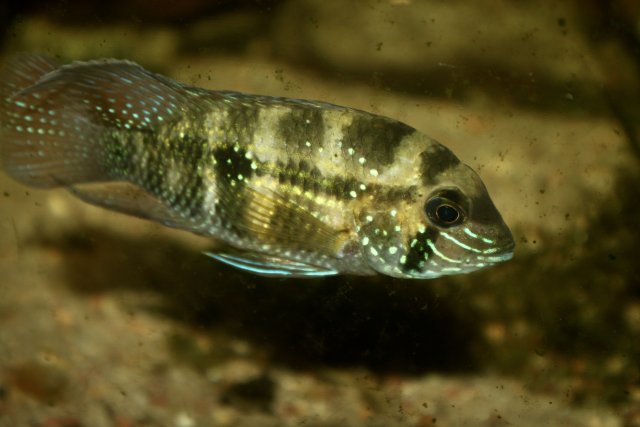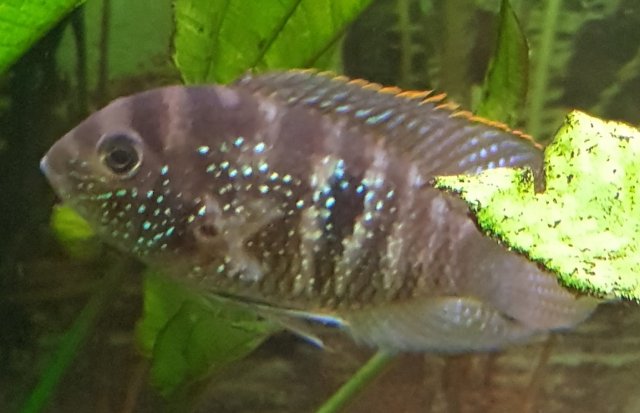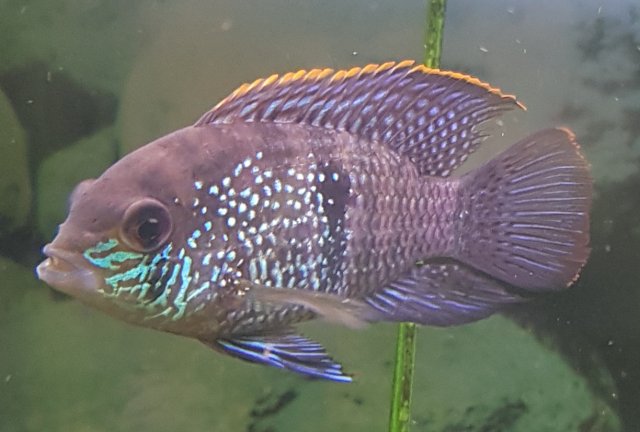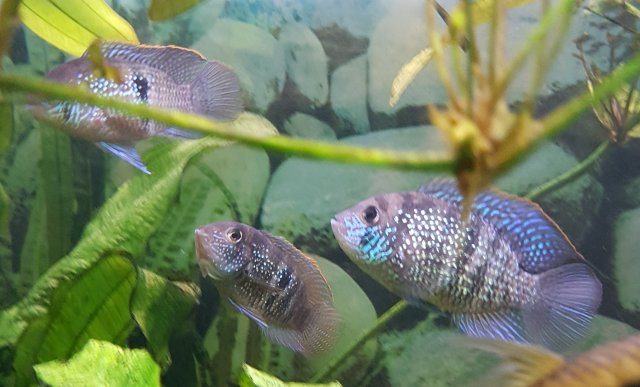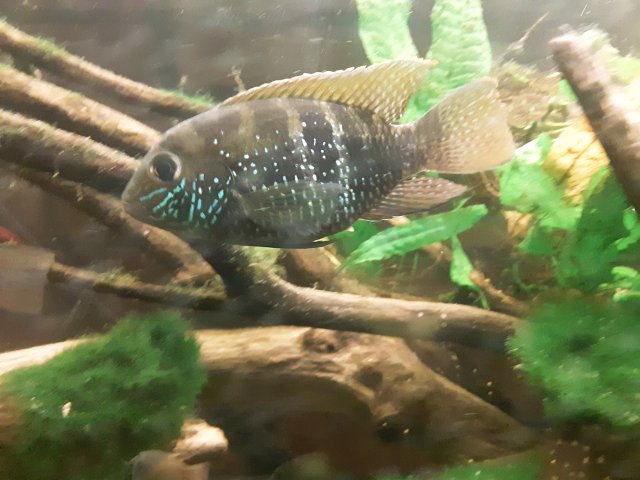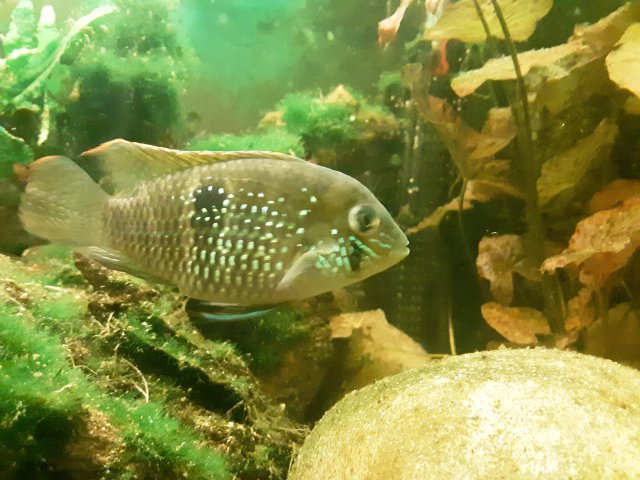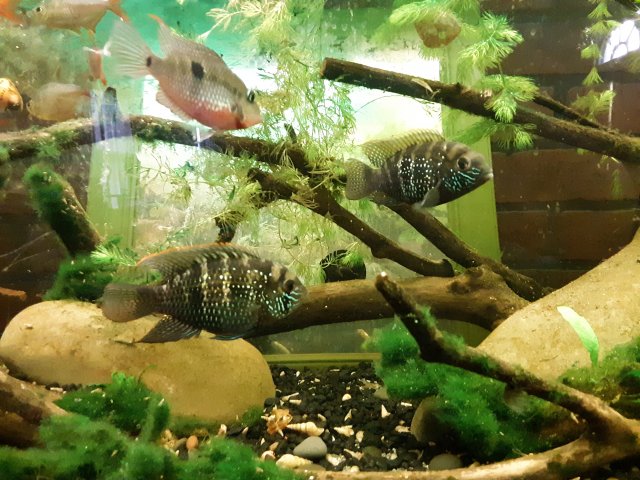There are at least 6 species of Andinoacara that would be considered acara types, as opposed to the terror type clade, depending on who is looking. A biseratus, A blombergi, A. latifrons, A. coeruleopunctatus, A.sapayensis, and A. sp choco,
But more likely, because there are so many location variants of pulcher in its very wide natural range, from Tinidad, to all over Venezuela, pulcher is the probable reality.
It could be that the parents ( or ancestors) were caught from 50 miles away from were your your others are from, and might explain the slight appearance variation.
But also as Ryan said, the possiblities of wholesalers and even collectors are endless.
And expecting local collectors to differentiate one varient from another in many countries is quite remote.
Here in Panama Andinoacara coeruleopunctatus is called a Chogorro by the locals, just as are all small cichlids, whether or not it's Panamius panamense, any species of Amatitlania, or any other cichlid like fish.
This is why some serious aquarists get so anal about certain catch locations for many species, and find big box LFS stocks called by common names to be a waste of time. Catch location is often the only way to know if you got what you asked for.
If you knew catch location, you "might" be able to pinpoint the species.
An example, A. blombergi are only found in certain rivers in Ecuador, and latifrons are from the Rio Magdalena system of Colombia.
Below is A. Coeruleopunctatus punctatus, is it that different from pucher? maybe to some, maybe not to others, but it was caught near San Martin just outside Panama City Panama,which says much about its ID.
